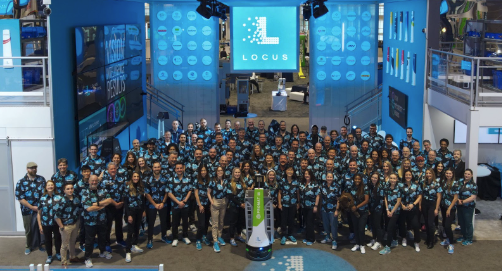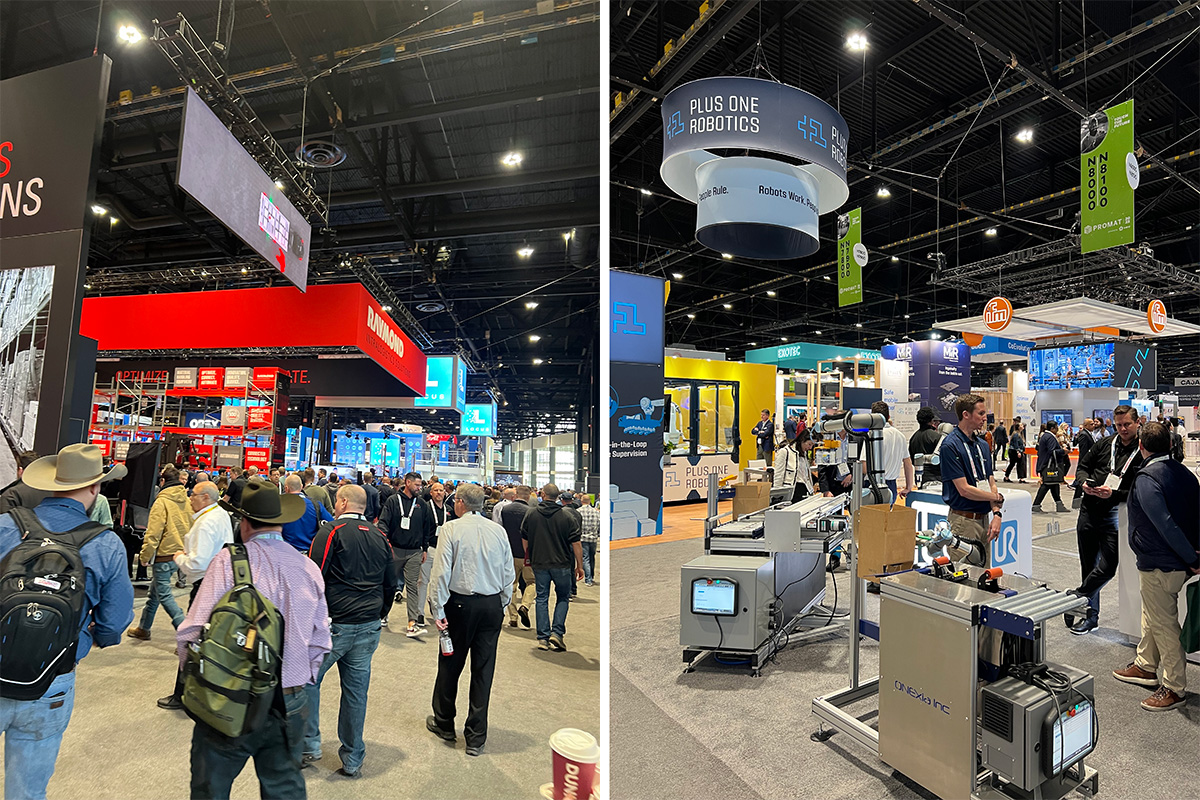Last week, I spent a few days in Chicago at PROMAT, which is one of the largest conferences in the US for supply chain and logistics solutions and software. For many companies within this ecosystem, this is the Super Bowl for their go-to-market teams where key customer conversations happen and a meaningful percentage of the year’s sales emerge. Supply chain is an industry where seeing is believing – especially when robotics are involved – and this year’s show was out in full force.
The environment was electric (no pun intended): with a roster of over 50,000 supply chain enthusiasts, the conference organizers brought attendance back to levels not seen since the start of the pandemic. And with close to 1,000 exhibitors, including four within the Scale family (Locus Robotics, Plus One Robotics, Spot.ai, and Verusen), any attendee could feel like a visitor at the Louvre where an attempt to stop and see every exhibit is simply a lost cause.

*(Credit: Locus Robotics)
Spending time at industry trade shows can be one of the best ways to get a real time sense of what’s happening in a market. The confluence of old and new companies, buyers, industry leaders, and machine builders creates an environment where everyone is within arm’s length of new insights and data points at virtually all times. Especially within the world of robotics and automation, the ability to see dozens of live demos and speak to industry professionals about how these solutions map to the problems they’re facing is invaluable.
In 2018, I attended MODEX (PROMAT’s sister conference held every other year in Atlanta) for the first time and then PROMAT the following year in 2019. Since then, in just a short amount of time, there have been noticeable changes that have taken place. What once felt like a conference for warehouse supplies and equipment now has a much greater orientation around software, robotics, and automation – which feels like a harbinger for where the industry is headed. Autonomy is making its way into more corners of the warehouse – from forklift operations, to depalletizing, to picking, packing, and trailer unloading. Several years ago, there was still a palpable skepticism around whether automation was here to stay. That mindset has now shifted: the same skepticism has been replaced by not just acceptance, but a series of questions around which automation solutions will be the right ones to choose.
Among the innovative software and robotics solutions for the warehouse, there was a clear focus on platforms, with machine builders trying to create solutions that can help automate multiple job functions within the warehouse. In a world where there is infinite hype around the capabilities of robots, we have observed that viable robotic solutions are infrequently capable of completing more than one or two tasks very well. As such, more and more partnerships are beginning to emerge to tackle multiple use cases within the same site (one such example is Locus Robotics’ recent partnership with Berkshire Grey to offer a cross-platform solution for its end customers). As labor headwinds, wage pressures, and rising rent costs continue, warehouse operators will continue to drive margin improvement by automating the tasks that are expensive, time-intensive, error-prone (or all of the above). Going forward, the question will be whether industry operators will purchase from many different point solutions (as it is today) or whether buyers will be able to look to just one or two full stack vendors to help them automate.
Industry experts believe that between 75% – 80% of all warehouses have not yet brought on their first automation solution and that the vast majority of the market still relies singularly on human labor. With more than 160,000 warehouses worldwide, there is still a huge amount of whitespace and a massive opportunity for emerging automation solutions within the industry. I’m eager to watch the developments happen within the ecosystem over the coming year – and if you’re an entrepreneur building software or automation that is bringing more intelligence to the built world, I hope that we can connect at MODEX in 2024.
